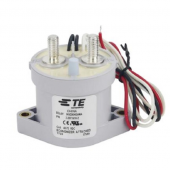I like these ideas are they both compliant with ABYC?:Looks good, personally I’d connect the limp home FLA connection with a manual switch , why bother with the cost of that relay when it might rarely be used. I’d also fit a manual bypass to the lithium relay , so the Li could be reconnected manually in extremis
1. Manual bypass switch to the lithium relay (and BMS) to reconnect the LFP to Loads and Chargers.
2. Replace 2nd Emergency relay connecting the FLA, with a manual switch.
3. Only one of these switches should be "On" at a time or the batteries will be connected.
The only disadvantage is that if sailing in the middle of the night with winds howling on a lee shore, with a tug towing a barge ahead, the BMS shuts off LFP and we are in the dark, no lights, nothing. Then we have to find the flashlights and perhaps have a headlamp, and get our heads around these two switches, or reset the BMS before we have nav lights or navigation.
What procedures when failure of LFP occurs?



